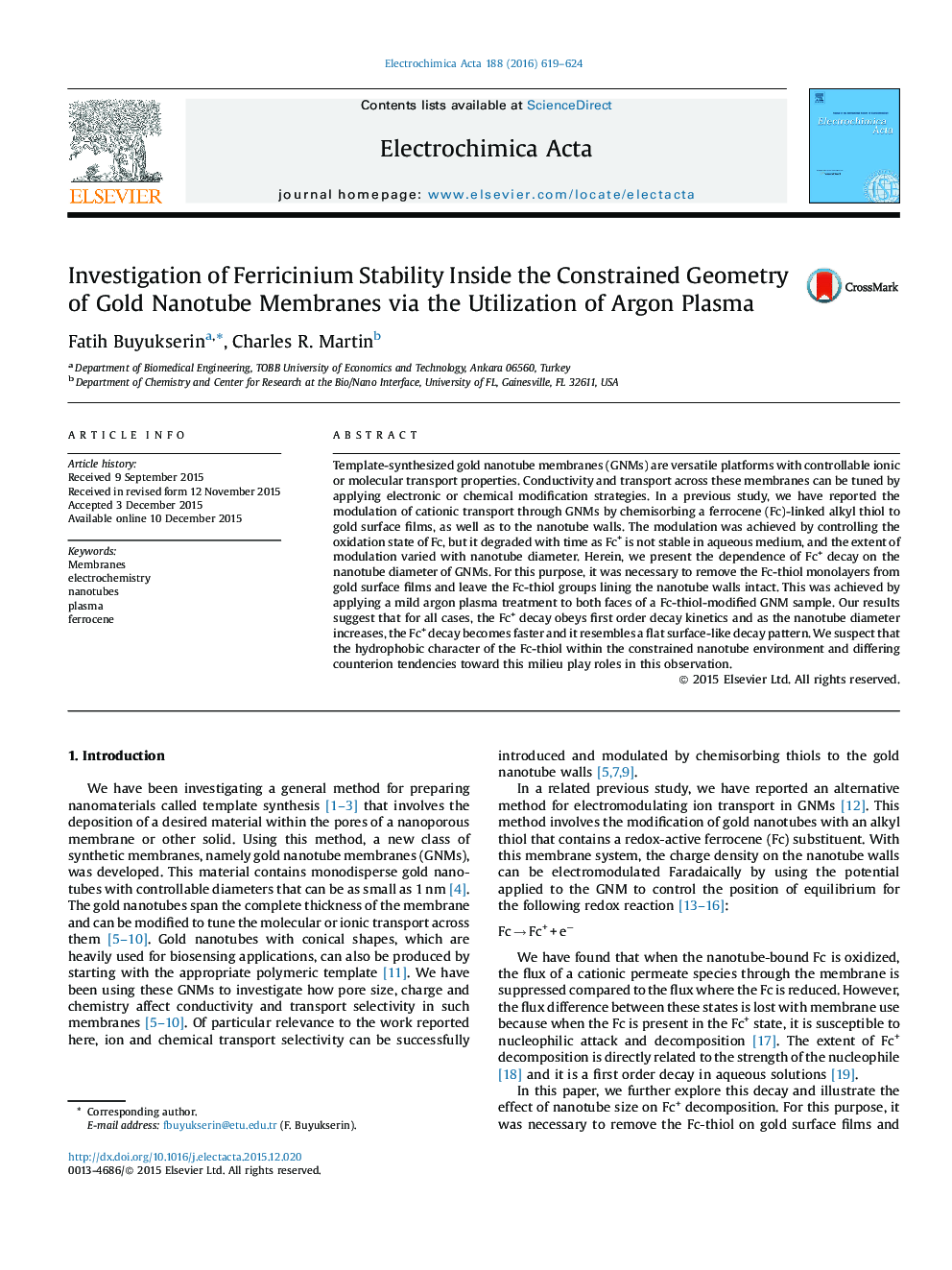| کد مقاله | کد نشریه | سال انتشار | مقاله انگلیسی | نسخه تمام متن |
|---|---|---|---|---|
| 183396 | 459544 | 2016 | 6 صفحه PDF | دانلود رایگان |
• Plasma treatment was conducted on a membrane platform to explore the electrochemistry of ferrocene(Fc) within the nanotubes of the membrane.
• Argon plasma is used to selectively remove Fc-substituted alkyl thiol monolayers from the top surface films of gold nanotube membrane samples.
• The influence of nanotube diameter on Fc+ decay is investigated for Fc-thiol layers lining the gold nanotube walls.
• The results suggest that the larger the nanotube diameter the faster the Fc+ decay and the more it resembles a flat surface-like behavior.
• It is thought that the hydrophobic character of the Fc-thiol monolayers and the differing tendencies of the counter ions in this medium contribute to the observed trend.
Template-synthesized gold nanotube membranes (GNMs) are versatile platforms with controllable ionic or molecular transport properties. Conductivity and transport across these membranes can be tuned by applying electronic or chemical modification strategies. In a previous study, we have reported the modulation of cationic transport through GNMs by chemisorbing a ferrocene (Fc)-linked alkyl thiol to gold surface films, as well as to the nanotube walls. The modulation was achieved by controlling the oxidation state of Fc, but it degraded with time as Fc+ is not stable in aqueous medium, and the extent of modulation varied with nanotube diameter. Herein, we present the dependence of Fc+ decay on the nanotube diameter of GNMs. For this purpose, it was necessary to remove the Fc-thiol monolayers from gold surface films and leave the Fc-thiol groups lining the nanotube walls intact. This was achieved by applying a mild argon plasma treatment to both faces of a Fc-thiol-modified GNM sample. Our results suggest that for all cases, the Fc+ decay obeys first order decay kinetics and as the nanotube diameter increases, the Fc+ decay becomes faster and it resembles a flat surface-like decay pattern. We suspect that the hydrophobic character of the Fc-thiol within the constrained nanotube environment and differing counterion tendencies toward this milieu play roles in this observation.
Journal: Electrochimica Acta - Volume 188, 10 January 2016, Pages 619–624
